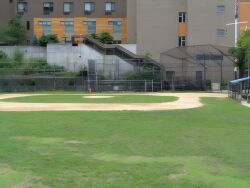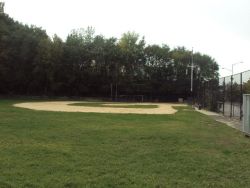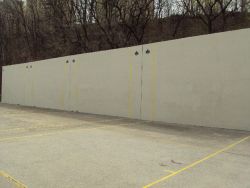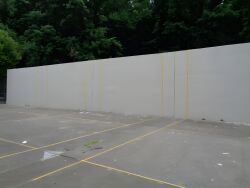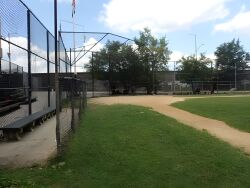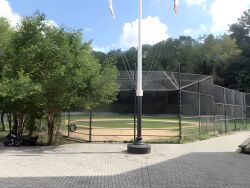Fordham Landing Playground
Fordham Landing Playground
The name Fordham, which figures so prominently in Bronx history, dates back to the seventeenth century. In 1671, Governor Francis Lovelace granted a stretch of land extending 3,900 acres between the Harlem and Bronx Rivers to Dutch settler John Archer (also spelled Jan Arcer). Archer named his manor Fordham, meaning “houses by the ford (or wading place),” after a nearby ford, then the only way to cross directly from the Bronx to Manhattan. After Archer died, his manor was divided into small farms, and the area evolved into a prosperous community. This ended with the Revolutionary War, when the British invaded and ravaged the area, destroying the houses for firewood. The neighborhood remained largely uninhabited until 1841, when the New York and Harlem Railroad extended a line to the area. St. John’s College, later renamed Fordham University, opened at about the same time. The neighborhood grew explosively after rapid transit was extended from Manhattan, first through the 3rd Avenue elevated line, which arrived in 1900, followed by the Jerome Avenue El train, which arrived in 1918, and finally by the Grand Concourse subway, which opened in 1933.
Fordham Landing referred to a point of land on the Harlem River, approximately 100 yards to the north of the present-day University Heights Bridge. It was originally named Berrian’s Landing, after a pre-Revolutionary Bronx family that owned extensive farmland in several sections of the Bronx. The Landing once had its own rescue station called the Fordham Landing Division, a volunteer station of the Life Saving Service of New York. It was organized in 1897 and at its peak it had four officers and fifteen surfmen.
Parks acquired this site on December 12, 1950 in conjunction with the construction of the Major Deegan Expressway. Fordham Landing Playground is one of six disconnected parks, ranging in area from about one-tenth of an acre to about four acres, that border the Major Deegan Expressway. Major William F. Deegan (1882-1932) was the son of Irish immigrants and studied architecture at Cooper Union. During World War I, he served as a staff officer of the 105th Field Artillery, and later as a major with the Army Corps of Engineers under General George W. Goethals, where he oversaw the construction of Army bases in the New York City area. Deegan also served as president of the Bronx Chamber of Commerce, as Mayor James J. Walker’s Tenement Housing Commissioner, and as chairman of the Mayor’s Committee for Welcoming Distinguished Guests. On April 30, 1937, Mayor Fiorello H. LaGuardia renamed the westerly approach to the Triborough Bridge the Major William F. Deegan Boulevard; when the boulevard was lengthened in 1956, it was renamed the Major Deegan Expressway.
This popular ballfield was renovated in 1997 under a $473,000 capital project funded by Council Member Israel Ruiz, Jr. With a new sod outfield and infield, field dugouts, grading, drainage, a curb fence, and animal art, the playground will better serve the 34 leagues using the Bronx fields as well as all children in the community.
Check out your park's Vital Signs
Clean & Safe
Green & Resilient
Empowered & Engaged Users
Share your feedback or learn more about how this park is part of a
Vital Park System

